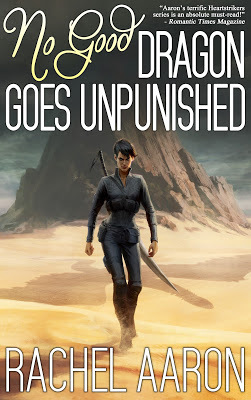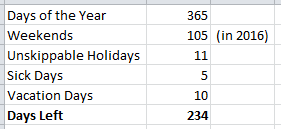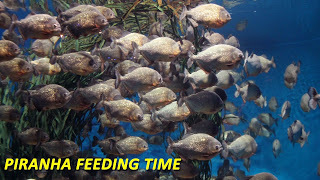Writing Wednesday: Project Management for the Writing Business (with bonus Heartstrikers 3 sample chapter reveal!)
Hello everyone!
I'm up to my neck in work all of a sudden, so we're taking a quick break from Prose Summer Camp. Travis has come to the Writing Wednesday rescue with an AMAZING post about how to manage your writing schedule like the pros (or at least these pros) do.
Before we get into that, though, I've got a treat for you. As you know, the third Heartstrikers novels, No Good Dragon Goes Unpunished , comes out on August 5! I realize that's very far away, so I've put together a little something to tide you over. How about...sample chapters?!

That's right, you can read the prologue and first chapter of No Good Dragon Goes Unpunished right here, right now! What happened in China? Get ready to find out!
You can also preorder the book right now. You know, just to be safe. Bob says it's dangerous to go alone. Take this.
And with that, I have to go back to the word mines. I really hope you enjoy this sneak peek, and I know you're going to enjoy Trav's crazy awesome post about project management!
For real, if you want to be a writing professional with a reliable timeline (or any kind of development professional since we got all of this from our joint background in programming), this stuff is gold. I was really blown away.
And with that, take it away Travis!
***
Hi Folks,
Rachel and I sit down from time to time to plan out the writing schedule. Today I'd like to talk about the process and tools we use to generate our calendar with. This is a non-trivial question for a writing business, so I hope you'll find this info handy. It's all methods that I've learned from years of working in the programming industry, which is surprisingly similar to the book writing business.
Bonus: I'm going to post a spreadsheet that you can download and use to do this for yourself!
Project Management for the Writing BusinessHow many days can a full time writer write if a full time writer can write full time?
 It's not 365This is a question that all managers in all businesses have to learn and, in my experience, end up learning the hard way. Why the hard way? Because it's a lot less than anyone ever thinks it is and it's not intuitive. For example,
It's not 365This is a question that all managers in all businesses have to learn and, in my experience, end up learning the hard way. Why the hard way? Because it's a lot less than anyone ever thinks it is and it's not intuitive. For example,
 there's not that many writing days per year!
there's not that many writing days per year!
Looking at this, a very diligent author can optimally cram in 234, eight-hour work days of writing. That's only 2/3rd of the year. This isn't the whole picture though, the number is actually much lower.

Toss in the overhead of full time work life as well as running an author blog and now we're down to basically half of the year for writing. I'm not done yet though! How much of this time is actually spent writing?
Later on, I'm going to link you to my Book Timeline Estimator spreadsheet. Right now though, I'm going to use it to give you an example of how much time goes into a sample Rachel Aaron novel.
Rachel and I plan novels all the time, so I don't count world buildingWriting and Editing is that part we all think of as the 'writing' part of this process. It includes first draft, first pass edits, second pass edits, and incorporating editorial letter input. The copy edits and beta readers phase is the more crunchy author work of fixing technically broken bits and information errors.
I'm sure ya'll are doing some reverse math here. 49 days x 10,000 words per day = 490,000 words! The behind the scenes truth is that it might take 220,000 words of writing to get a usable 180,000 word manuscript and then that sucker still needs an epic amount of editing time simply because of length and the bulkiness of making changes.

There's also dead time, which is time spent while the book is at the editor, copy editor, and with beta readers. This time is the devil IMO. You can't work on the book during it usually, cause versioning and cause it's technically done. The time lands sporadically with a week here and a month there, so it's very disruptive as well.
Starting new writing projects while wrapping up old ones is tough creatively as is trying to work on a new novel that's constantly interrupted by the demands of the old one. It's really tough to utilize the dead time productively we've found.
What's important here is that, for every 50 days of writing, there's another 21 of post-processing to make the final product salable.
Life is seldom so simple though! Keep in mind that these are fairly ideal times with only modest assumptions about things going wrong in the various processes. IMO a diligent and capable author should probably -1 book from those production estimates. (So two 120k novels / year in all practicality) Your mileage may vary.

So, as you can see, there's a countless many fish who all take bites from the writing schedule. Length and complexity of the novels really affect their production times as well. Managing the bumps and the dead times is also a factor, though that's as much art as it is best practices. Put it all together and its complicated, hence the need to plan and manage appropriately.What about overtime?Working more than 40 hours a week has a lot of problems. IMO it is not a strategy that works long term. Let's go down the list of why overtime shouldn't be part of your plan,If overtime is already part of the schedule, what do you do when you have to work overtime?Chronic overtime work carries serious health and productivity issues.Overtime pushes the brain to be less creative and more automatic. If good novels are your desire, overtime is neurologically your nemesis!Burnout and hating what you do are legit threats. (and we firmly believe you should love your writing!)Cramming in massive overtime to write more books is your business. I've said my peace here. Besides, I'm a firm believer that if you plan right, you shouldn't have to work chronic overtime.
How to Plan the Novel as a Project (The Easy Way)Calculating how many days it takes to write a book is one thing, factoring in weekends, holidays, sick days, vacations, dead time, editing time, and all that stuff I talked about above is a monumental task. "When will the novel be done? When can it come out?" are HUGE questions!

Well, they would be if not for the WORKDAY function in google docs (or NETWORKDAYS in Excel).
Open that link, go to file and choose Make a Copy. That'll give you a private version that you can input numbers and rearrange to your heart's content. (Note: you will need to be logged into Google for this to work)
Now, this spreadsheet is made for Rachel's generic process, so you might need to push stuff around for more editing cycles, world building, and so on. It's not perfect, but it's better than nothing. I wish I could make one that was easy to customize process-wise, but that's beyond my google docs programming skills right now. I do hope you gain some insight from using our sheet however.
The toughest part for most authors, I feel, will be knowing yourself well enough to be able to accurately fill this in. Ah, all that self measurement we talk about comes back! This is yet another time when it's flat out useful.
Here is what the sample sheet looks like, as best as I can get it into blogger that is. These fields are all explained in more detail inside the spreadsheet itself btw.
Book TitleBook 1 of the Awesome SeriesEstimated Final Word Count120,000Writing Start Date2/1/2017First Draft Difficulty (multiplier)1.5Editing Difficulty (multiplier)0.5Average Daily Word Count7000Estimated ScheduleFirst Draft Est Writing Days25.71First Draft Finished on3/8/2017First Draft to Editing Break1Editing Start3/9/2017Total Editing Days13Editing Finished3/28/2017Time at Editor30Editorial Letter Processing Started5/15/2017Days to Process Editorial Feedback10Editorial Letter Processing Finished5/29/2017Time at Copy/Proof editor14Copy Edits Processing Started6/16/2017Days to Process Copy Edits10Copy Edits Processing Finished6/30/2017Beta Readers start date7/3/2017Time with Beta Readers14Beta Readers Finish7/21/2017Beta Reader Input Assimilation Start7/24/2017Days to assimilate input5Beta Reader Input finished7/31/2017Final Product Design / Assembly Days6Book is finished!8/8/2017Target Launch Date8/15/2017Other DatesCover Art Turn around time (days)45Get cover art started no later than6/5/2017Pre-Order Length60Pre-Orders can start on6/16/201710 Day KDP manuscript deadline for Pre Orders8/4/2017
First, please take a minute to carefully read that as it tells a story of sorts. The most important thing to notice is how the use of business days greatly elongates the timelines. For example,
So yeah, all that talk above about missing days and how many days a writer actually gets, this is how you use it. This is how I use it rather. This method takes all those days into account. (Note: the hours lost to blogging and such are reflected by the Average Daily Word Count field.)
Got it? Ready to move on to bigger fish? Lets take this up a level now.
How to Plan a Series or Your YearTBH, I just duplicate this single book timeline over and over for multiple projects. Then I do stuff like "project B.writing start date = project A.book is finished". It's both the worst and most simple way to do this kind of planning.
A more efficient way is to make sure to overlap projects a bit using dead time. If you have book planning and world building phases, then overwrite their start dates using things like "editing finished" as that's the date that book A goes off to the content editor for 30 business days or "beta readers start date" as that's 14 days of dead time as well.
The most valuable part of this whole exercise is that the sheet will show you a reasonable picture of the future that you can work with. It'll present problems that you can then seek solutions for. Knowing is half the battle after all.

Final Step, use a CalendarOnce Rachel and I are happy with the projected times for a book, I generally go off an put all of them into our publishing calendar. This is just a google calendar that we both share. It's easy to do and it issues handy reminders so that we don't forget to check up on the progress.
What about Project Management Software?MS Project, Libra Office, Zoho, etc... There's a million project management software packages out there at free, pay, and "a king's ransom" levels of cost. After 15 years of programming and trying out different ones at different companies, I've seen easily 50 of these things. I've even taken part in lengthy evaluation studies and such, so my exposure to them is very in-depth.
In the endI'll be straight with ya'll, it never goes on schedule. Writing is a wicked problem and every book is a new battlefield. Even when it does, life is just bumpy. Though Rachel and I have been at this for a while, there's still plenty that goes wrong and also plenty that goes right. This whole project planning thing is always educated guesswork at best.
It's very educational and informative guesswork though. Everyone should turn a critical eye on their processes from time to time. It's also good to have a general idea of if you are on schedule or not. Often times, not being on schedule is a subtle red flag that can lead you to finding and solving heretofore unknown problems.
If you can do this kind of planning without spending lots of time on it, then I feel it's absolutely worth doing.
Thanks for reading today. If there's any topics you'd like me or Rachel to talk about here on the blog, please feel free to leave them below. We're always working hard to find information that is useful to you. You can also just hit me up on Twitter, that works too! (@TravBach) Rachel's social media links are here as well if you want to get live updates! (Twitter/Facebook/Tumblr/Google+)
Thanks again for reading, and I'll see you all next week!
Sincerely,
-Travis
I'm up to my neck in work all of a sudden, so we're taking a quick break from Prose Summer Camp. Travis has come to the Writing Wednesday rescue with an AMAZING post about how to manage your writing schedule like the pros (or at least these pros) do.
Before we get into that, though, I've got a treat for you. As you know, the third Heartstrikers novels, No Good Dragon Goes Unpunished , comes out on August 5! I realize that's very far away, so I've put together a little something to tide you over. How about...sample chapters?!

That's right, you can read the prologue and first chapter of No Good Dragon Goes Unpunished right here, right now! What happened in China? Get ready to find out!
You can also preorder the book right now. You know, just to be safe. Bob says it's dangerous to go alone. Take this.
And with that, I have to go back to the word mines. I really hope you enjoy this sneak peek, and I know you're going to enjoy Trav's crazy awesome post about project management!
For real, if you want to be a writing professional with a reliable timeline (or any kind of development professional since we got all of this from our joint background in programming), this stuff is gold. I was really blown away.
And with that, take it away Travis!
***
Hi Folks,
Rachel and I sit down from time to time to plan out the writing schedule. Today I'd like to talk about the process and tools we use to generate our calendar with. This is a non-trivial question for a writing business, so I hope you'll find this info handy. It's all methods that I've learned from years of working in the programming industry, which is surprisingly similar to the book writing business.
Bonus: I'm going to post a spreadsheet that you can download and use to do this for yourself!
Project Management for the Writing BusinessHow many days can a full time writer write if a full time writer can write full time?
 It's not 365This is a question that all managers in all businesses have to learn and, in my experience, end up learning the hard way. Why the hard way? Because it's a lot less than anyone ever thinks it is and it's not intuitive. For example,
It's not 365This is a question that all managers in all businesses have to learn and, in my experience, end up learning the hard way. Why the hard way? Because it's a lot less than anyone ever thinks it is and it's not intuitive. For example, there's not that many writing days per year!
there's not that many writing days per year!Looking at this, a very diligent author can optimally cram in 234, eight-hour work days of writing. That's only 2/3rd of the year. This isn't the whole picture though, the number is actually much lower.

Toss in the overhead of full time work life as well as running an author blog and now we're down to basically half of the year for writing. I'm not done yet though! How much of this time is actually spent writing?
Later on, I'm going to link you to my Book Timeline Estimator spreadsheet. Right now though, I'm going to use it to give you an example of how much time goes into a sample Rachel Aaron novel.
Rachel and I plan novels all the time, so I don't count world buildingWriting and Editing is that part we all think of as the 'writing' part of this process. It includes first draft, first pass edits, second pass edits, and incorporating editorial letter input. The copy edits and beta readers phase is the more crunchy author work of fixing technically broken bits and information errors.
I'm sure ya'll are doing some reverse math here. 49 days x 10,000 words per day = 490,000 words! The behind the scenes truth is that it might take 220,000 words of writing to get a usable 180,000 word manuscript and then that sucker still needs an epic amount of editing time simply because of length and the bulkiness of making changes.

There's also dead time, which is time spent while the book is at the editor, copy editor, and with beta readers. This time is the devil IMO. You can't work on the book during it usually, cause versioning and cause it's technically done. The time lands sporadically with a week here and a month there, so it's very disruptive as well.
Starting new writing projects while wrapping up old ones is tough creatively as is trying to work on a new novel that's constantly interrupted by the demands of the old one. It's really tough to utilize the dead time productively we've found.
What's important here is that, for every 50 days of writing, there's another 21 of post-processing to make the final product salable.
Going with that 11% post-processing estimation, our 181 writing days drops to 160 actual writing days.Which is, if one is really sticking to the schedule, about enough time to write four 90k novels, three 120k novels, or two (at best) 180k books. (Writing times inflate non-linearly as book size goes up BTW, but that's another post)
Life is seldom so simple though! Keep in mind that these are fairly ideal times with only modest assumptions about things going wrong in the various processes. IMO a diligent and capable author should probably -1 book from those production estimates. (So two 120k novels / year in all practicality) Your mileage may vary.

So, as you can see, there's a countless many fish who all take bites from the writing schedule. Length and complexity of the novels really affect their production times as well. Managing the bumps and the dead times is also a factor, though that's as much art as it is best practices. Put it all together and its complicated, hence the need to plan and manage appropriately.What about overtime?Working more than 40 hours a week has a lot of problems. IMO it is not a strategy that works long term. Let's go down the list of why overtime shouldn't be part of your plan,If overtime is already part of the schedule, what do you do when you have to work overtime?Chronic overtime work carries serious health and productivity issues.Overtime pushes the brain to be less creative and more automatic. If good novels are your desire, overtime is neurologically your nemesis!Burnout and hating what you do are legit threats. (and we firmly believe you should love your writing!)Cramming in massive overtime to write more books is your business. I've said my peace here. Besides, I'm a firm believer that if you plan right, you shouldn't have to work chronic overtime.
How to Plan the Novel as a Project (The Easy Way)Calculating how many days it takes to write a book is one thing, factoring in weekends, holidays, sick days, vacations, dead time, editing time, and all that stuff I talked about above is a monumental task. "When will the novel be done? When can it come out?" are HUGE questions!

Well, they would be if not for the WORKDAY function in google docs (or NETWORKDAYS in Excel).
I've put together a sample spreadsheet that you can just fill in with your info.
Open that link, go to file and choose Make a Copy. That'll give you a private version that you can input numbers and rearrange to your heart's content. (Note: you will need to be logged into Google for this to work)
Now, this spreadsheet is made for Rachel's generic process, so you might need to push stuff around for more editing cycles, world building, and so on. It's not perfect, but it's better than nothing. I wish I could make one that was easy to customize process-wise, but that's beyond my google docs programming skills right now. I do hope you gain some insight from using our sheet however.
The toughest part for most authors, I feel, will be knowing yourself well enough to be able to accurately fill this in. Ah, all that self measurement we talk about comes back! This is yet another time when it's flat out useful.
Here is what the sample sheet looks like, as best as I can get it into blogger that is. These fields are all explained in more detail inside the spreadsheet itself btw.
Book TitleBook 1 of the Awesome SeriesEstimated Final Word Count120,000Writing Start Date2/1/2017First Draft Difficulty (multiplier)1.5Editing Difficulty (multiplier)0.5Average Daily Word Count7000Estimated ScheduleFirst Draft Est Writing Days25.71First Draft Finished on3/8/2017First Draft to Editing Break1Editing Start3/9/2017Total Editing Days13Editing Finished3/28/2017Time at Editor30Editorial Letter Processing Started5/15/2017Days to Process Editorial Feedback10Editorial Letter Processing Finished5/29/2017Time at Copy/Proof editor14Copy Edits Processing Started6/16/2017Days to Process Copy Edits10Copy Edits Processing Finished6/30/2017Beta Readers start date7/3/2017Time with Beta Readers14Beta Readers Finish7/21/2017Beta Reader Input Assimilation Start7/24/2017Days to assimilate input5Beta Reader Input finished7/31/2017Final Product Design / Assembly Days6Book is finished!8/8/2017Target Launch Date8/15/2017Other DatesCover Art Turn around time (days)45Get cover art started no later than6/5/2017Pre-Order Length60Pre-Orders can start on6/16/201710 Day KDP manuscript deadline for Pre Orders8/4/2017
First, please take a minute to carefully read that as it tells a story of sorts. The most important thing to notice is how the use of business days greatly elongates the timelines. For example,
30 business days at the editor is March 28th to May 15th, 2017If you just did 3/28/2017 + 30 calendar days, you'd get 4/27/2017. Apply this technicality across all phases of the project and now we see how a book that takes 25 days to write requires 6 months to hit the shelves.
So yeah, all that talk above about missing days and how many days a writer actually gets, this is how you use it. This is how I use it rather. This method takes all those days into account. (Note: the hours lost to blogging and such are reflected by the Average Daily Word Count field.)
Got it? Ready to move on to bigger fish? Lets take this up a level now.
How to Plan a Series or Your YearTBH, I just duplicate this single book timeline over and over for multiple projects. Then I do stuff like "project B.writing start date = project A.book is finished". It's both the worst and most simple way to do this kind of planning.
A more efficient way is to make sure to overlap projects a bit using dead time. If you have book planning and world building phases, then overwrite their start dates using things like "editing finished" as that's the date that book A goes off to the content editor for 30 business days or "beta readers start date" as that's 14 days of dead time as well.
The most valuable part of this whole exercise is that the sheet will show you a reasonable picture of the future that you can work with. It'll present problems that you can then seek solutions for. Knowing is half the battle after all.

Final Step, use a CalendarOnce Rachel and I are happy with the projected times for a book, I generally go off an put all of them into our publishing calendar. This is just a google calendar that we both share. It's easy to do and it issues handy reminders so that we don't forget to check up on the progress.
What about Project Management Software?MS Project, Libra Office, Zoho, etc... There's a million project management software packages out there at free, pay, and "a king's ransom" levels of cost. After 15 years of programming and trying out different ones at different companies, I've seen easily 50 of these things. I've even taken part in lengthy evaluation studies and such, so my exposure to them is very in-depth.
My professional opinion on project management software is that all of them are terrible, overly complicated, and don't manage multiple projects properly at all.If you're already trained in using PM software, good for you! There's nothing for me to teach on this score. If you aren't expert, then please don't bother. Use a simpler tool (like my spreadsheet ^_~) and spend your extra time writing instead. As you see in this post, non-writing activities are the enemy of all authors.
In the endI'll be straight with ya'll, it never goes on schedule. Writing is a wicked problem and every book is a new battlefield. Even when it does, life is just bumpy. Though Rachel and I have been at this for a while, there's still plenty that goes wrong and also plenty that goes right. This whole project planning thing is always educated guesswork at best.
It's very educational and informative guesswork though. Everyone should turn a critical eye on their processes from time to time. It's also good to have a general idea of if you are on schedule or not. Often times, not being on schedule is a subtle red flag that can lead you to finding and solving heretofore unknown problems.
If you can do this kind of planning without spending lots of time on it, then I feel it's absolutely worth doing.
Thanks for reading today. If there's any topics you'd like me or Rachel to talk about here on the blog, please feel free to leave them below. We're always working hard to find information that is useful to you. You can also just hit me up on Twitter, that works too! (@TravBach) Rachel's social media links are here as well if you want to get live updates! (Twitter/Facebook/Tumblr/Google+)
Thanks again for reading, and I'll see you all next week!
Sincerely,
-Travis
Published on June 29, 2016 05:30
No comments have been added yet.



